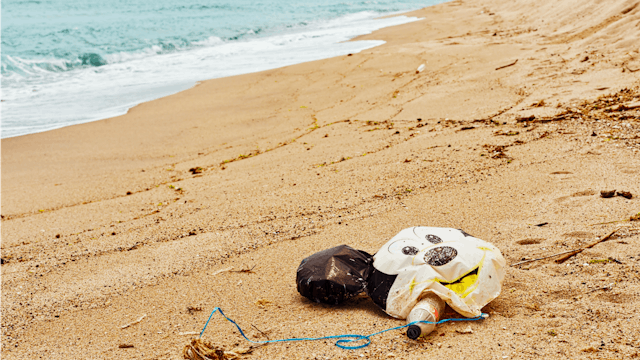Real Talk: Balloon Releases Trash The Earth And Kill Wildlife

Unless your kid unwittingly let go of his Spiderman Mylar and is now bawling his eyes out, there’s something undeniably whimsical about a balloon floating up into a clear blue sky. Maybe there’s a message tied to the end of the ribbon, traveling to an unknown destination. A clutch of balloons usually means a mass release, maybe to commemorate the life of a lost loved one or pet, to celebrate a newly married couple or support a cause.
We love to decorate with balloons, toss them around, and end up paying too much for the light-up helium ones when our kids wear us down with their whining. When I see balloons floating away, I often think about who was holding on to it last and where it will end up.
Turns out those delightful balloons we release, as well as those that get loose on their own, end up as litter, death traps for wildlife, or both. While there are arguments both supporting the negative effects of balloon releases and debunking them, there’s no denying that what goes up must come down. When it does, it can be messy and life-threatening. While precise numbers are not available, according to the U.S. Fish and Wildlife Service, birds, turtles, and other sea life often mistake balloons for food and are injured or die when they eat them. Latex balloon debris has been found in the digestive tracks of whales, turtles, and birds as well as other wildlife.
The balloon industry doesn’t deny that popped balloon material ends up on the ground and in our rivers, lakes and oceans, but it does push the fact that latex is biodegradable and therefore not that bad. The truth is, it can take months for latex to dissolve, which means animals and even small children might ingest the colorful scraps before they degrade. In addition to actual balloon material, which is usually latex but can also be foil, there is sometimes a plastic fastener as well as ribbon or string attached to the end of a balloon. Animals can get caught up in this mess, sometimes strangling to death or ending up with their limbs or wings bound.
All of this is pretty nasty. No one wants to be responsible for trashing the earth or harming animals and children. Does this mean we should give up our love affair with balloons? Not necessarily. What we can do is keep helium-filled balloons indoors, and if we have to bring them outside, we need to be vigilant about keeping them weighted and avoid using any additional plastic materials to tie them off or secure them.
What we absolutely can do to help keep the world clean and wildlife safe is stop releasing them purposely en masse.
Releasing hundreds of balloons in honor of a loved one or to mark a joyous occasion is dramatic, beautiful, and sometimes deeply meaningful, but it isn’t the only option. Balloons Blow, a non-profit organization designed to educate people about the harmful effects of released balloons on the environment, suggests several alternatives. How about a more lasting gesture, like planting a tree or a garden in honor of a loved one? Floating flowers down a stream is somewhat similar to balloons floating into the sky. Blowing bubbles, lighting candles, and painting rocks and placing them in special places are all different ways to mark an important occasion without endangering living creatures or littering.
The good news is, the balloon manufacturers and sellers of the world seem to be aware of the impact released balloons have on the environment and wildlife. For example, The Balloon Council — a self-described organization of retailers, distributors, and manufacturers that educates consumers and regulators about balloons and the proper handling of them — has smart balloon practices information on their website and encourages retailers to meet the criteria for becoming part of their Responsible Balloon Retailers network. The bad news is, selling balloons is their livelihood and even though their products can be harmful, they’re going to keep on doing it. It’s up to us to decide how we approach this as consumers.
The bottom line is, releasing balloons into the sky isn’t a harmless thing to do. If you need a little more motivation to do the right thing, you should know that mass balloon releases are illegal in several cities, countries, and states including California, Connecticut, Florida, Virginia, and Tennessee. Coming up with an alternative might not be your first choice, but hopefully the good you’re doing by keeping the world clean and safe outweighs your disappointment. So stop releasing balloons and go (native) wildflower bomb the neighborhood instead.
This article was originally published on